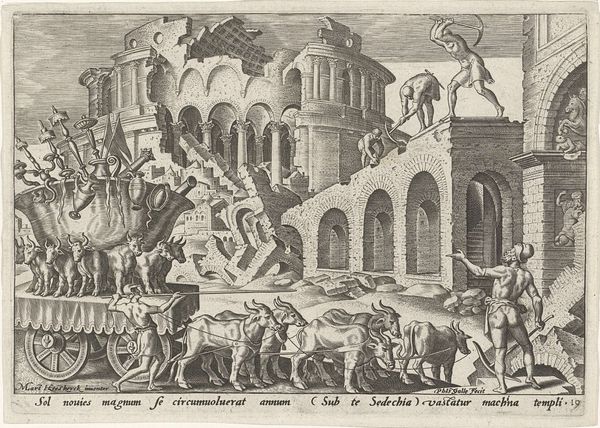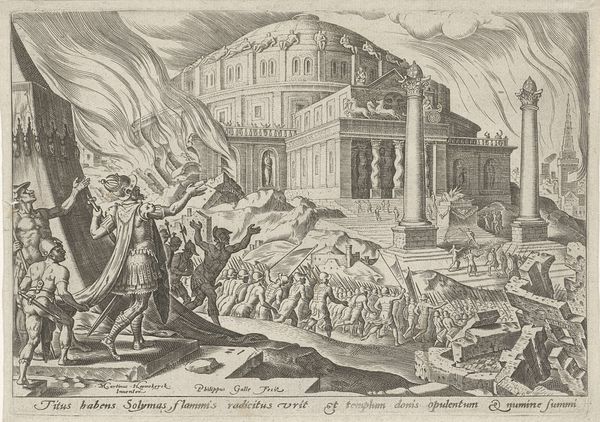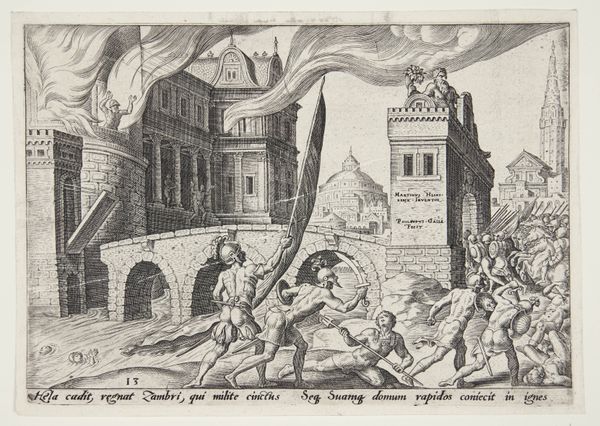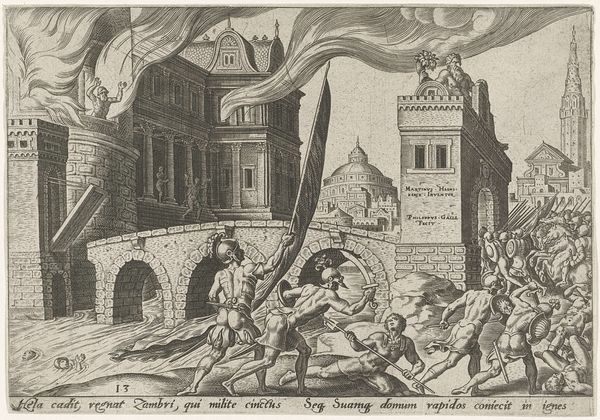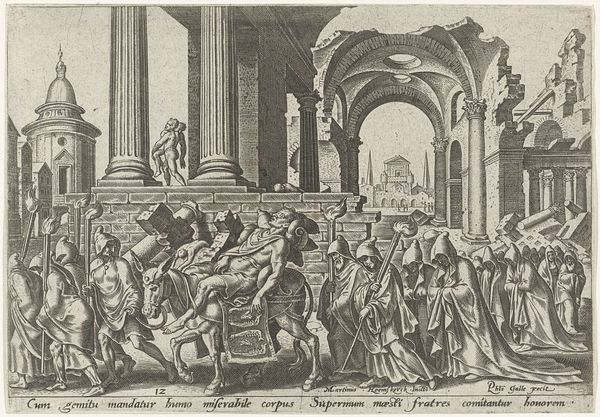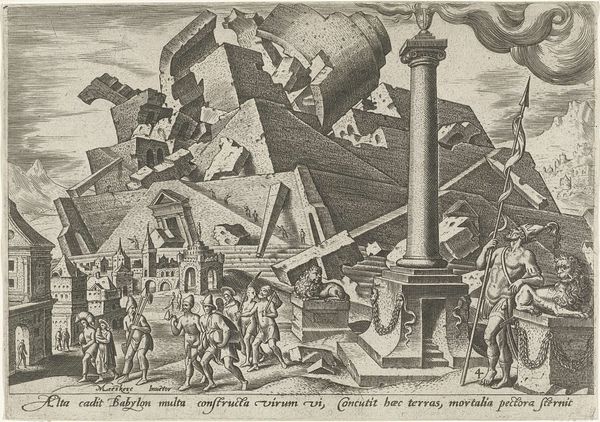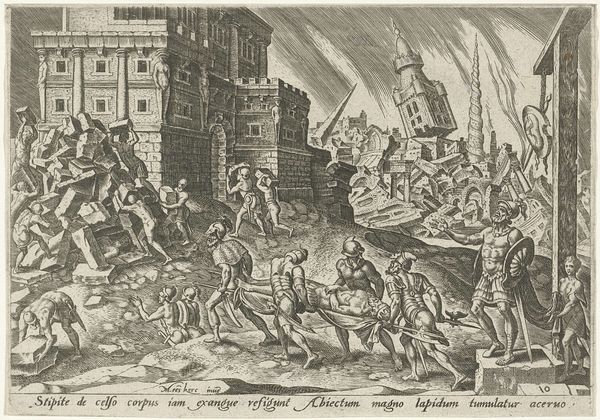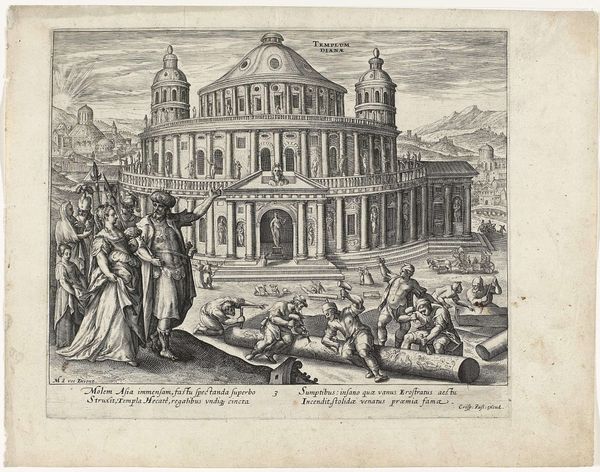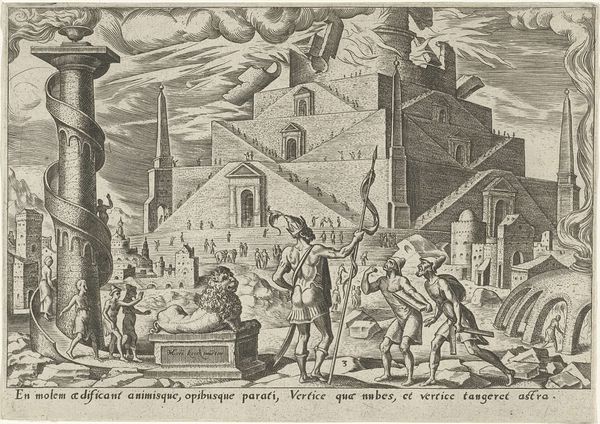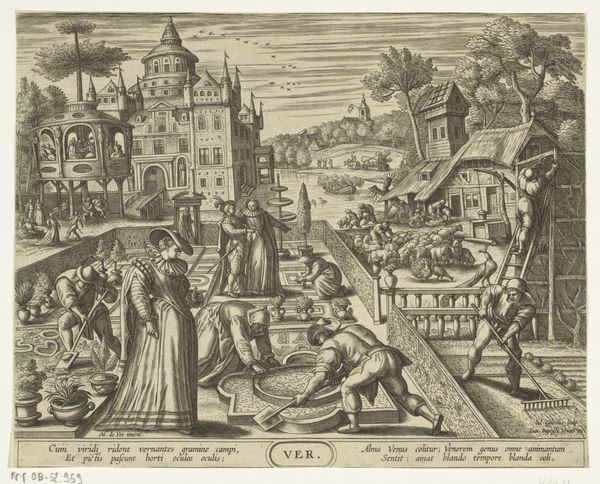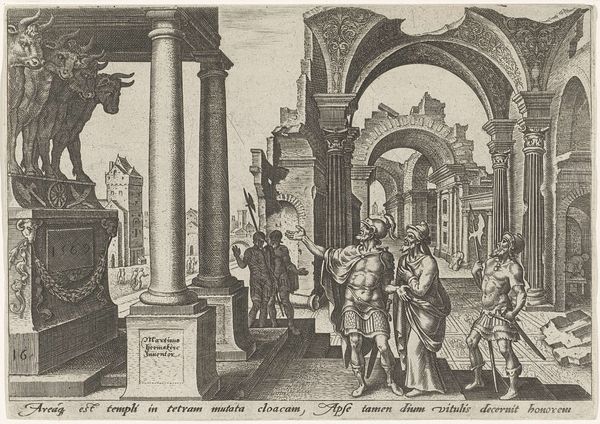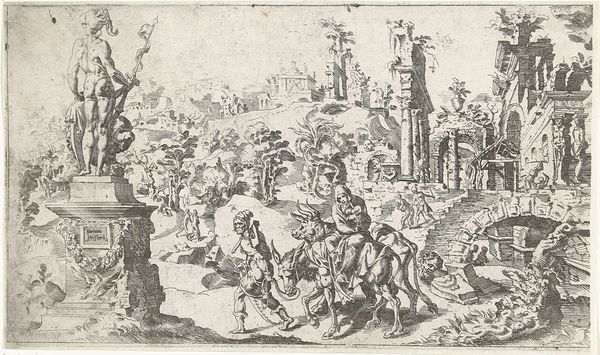
Dimensions: height 143 mm, width 203 mm
Copyright: Rijks Museum: Open Domain
Curator: Here we have Philips Galle’s "Simson verwoest de tempel van de Filistijnen," or "Samson destroying the temple of the Philistines," created in 1569. It’s currently housed here at the Rijksmuseum and made using engraving. Editor: Whew! Chaos reigns, doesn’t it? You immediately sense the raw energy. I get a sense of both impending doom, and perhaps… catharsis? The whole place is collapsing; you can almost feel the vibration. Curator: Indeed. Consider the linework itself; the density with which it articulates both the structural integrity of the temple, prior to its collapse, and the ensuing devastation. The figures are literally overwhelmed by architecture. Note Galle's masterful use of perspective—he manages to create depth despite the flat picture plane of the engraving. Editor: And Samson, right in the thick of it all, practically the cause! His expression seems… I don’t know, resolute? Determined? Is there triumph in his gaze? Curator: Perhaps. His resolve could stem from a deeper theological consideration. The story, of course, is one of divine retribution exacted through Samson, with God's assistance—Samson leverages that God-given strength against his oppressors. You can examine the lines depicting muscle and the body straining as a demonstration of Galle’s use of art to depict a theological and semiotic relationship between humanity and the divine. Editor: So much to unpack! Beyond the figures, the collapsing architecture has an expressive life of its own. What was rigid and controlled crumbles and tumbles… is it liberation from oppression, or total annihilation? Maybe it’s both. Curator: It certainly posits complex considerations of free will, retribution, and piety. Ultimately, through considered visual engagement, one decodes meaning across diverse art practices that engage with critical philosophical perspectives. Editor: And for me? The drama here speaks beyond time, those heavy, crumbling walls and bodies flying as though history and now were just, poof, colliding. Food for thought on the long walk home.
Comments
No comments
Be the first to comment and join the conversation on the ultimate creative platform.
